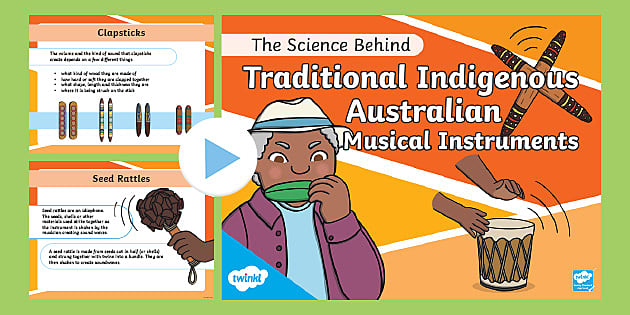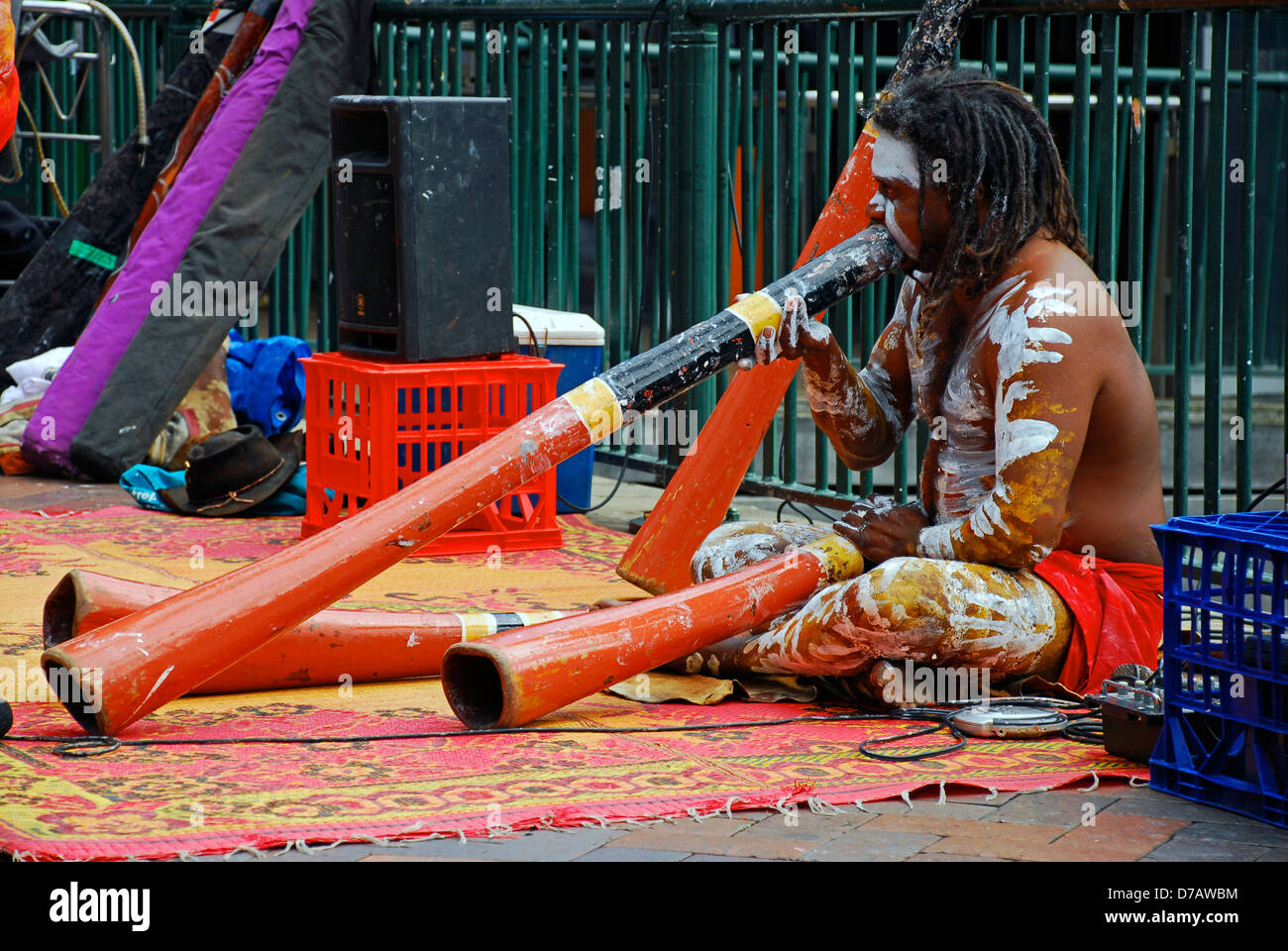Echoes of the Ancients: Unraveling the Sounds of Aboriginal Australian Musical Instruments
Echoes of the Ancients: Unraveling the Sounds of Aboriginal Australian Musical Instruments

Australia, a land of vast landscapes and diverse cultures, holds a rich musical heritage stretching back millennia. The indigenous people of Australia, the Aboriginal Australians, have a deep connection to their land and a unique musical tradition that reflects this connection. Their music, a vibrant tapestry woven from ancient instruments, rituals, and stories, offers a glimpse into the heart and soul of their culture.
This article delves into the fascinating world of ancient Aboriginal Australian musical instruments, exploring their diverse forms, functions, and the profound cultural significance they hold.
Related Articles: Echoes of the Ancients: Unraveling the Sounds of Aboriginal Australian Musical Instruments
- November’s Embrace: Unveiling The Rich Symbolism Of Aboriginal Culture
- The Vibrant Tapestry Of North Queensland: Unveiling The Indigenous Tribes
- A Journey Through The Canopy: A Comprehensive List Of Western Australia’s Majestic Trees
- A Journey Through The Sacred Animals Of Australia: From Ancient Lore To Modern Symbolism
- The Land Is Our Story: Understanding Aboriginal Symbols For Land Ownership
1. Didgeridoo: The Iconic Voice of the Outback
The didgeridoo, also known as the "yidaki" in some Aboriginal languages, is perhaps the most recognizable instrument from Australia. This unique wind instrument, crafted from a hollowed-out eucalyptus trunk, produces a distinctive drone-like sound that has captivated audiences worldwide.
How it works: The didgeridoo is played by buzzing the lips against the mouthpiece and manipulating the breath to create a continuous, resonating sound. The length and shape of the instrument determine the pitch and tone.
Cultural Significance: The didgeridoo holds profound cultural significance for Aboriginal Australians. It is often used in ceremonies, rituals, and storytelling, representing the connection between the spirit world and the physical world. The didgeridoo’s sound is believed to mimic the breath of the ancestors, the wind, and the heartbeat of the Earth.
2. Clapsticks: Rhythmic Voices of the Bush
Clapsticks, also known as "kulpi," are simple yet powerful percussion instruments made from hardwood branches or sticks. These instruments are typically played in pairs, struck together to create a rhythmic beat that accompanies dances, songs, and storytelling.
How it works: Clapsticks are held in each hand and struck together to produce a sharp, percussive sound. The rhythm and tempo can be varied by changing the striking technique and the angle of the sticks.
Cultural Significance: Clapsticks are widely used throughout Aboriginal Australia, representing the heartbeat of the land and the rhythm of life. They are often used in ceremonies and rituals, where the rhythmic sounds help to connect participants to the spirit world.

3. Bullroarer: The Voice of the Spirits
The bullroarer, also known as "ruruk" or "whirlybird," is a unique instrument made from a flat, rectangular piece of wood tied to a string. When swung in a circle, the bullroarer creates a deep, resonant sound that can be heard over long distances.
How it works: The bullroarer’s sound is produced by the air rushing past its surface as it is swung. The shape and size of the instrument determine the pitch and tone of the sound.
Cultural Significance: The bullroarer holds significant spiritual and ceremonial value for many Aboriginal groups. It is often used in initiation ceremonies, representing the voice of the ancestors or spirits. The sound of the bullroarer can be used to communicate messages, warn others of danger, or invoke spiritual power.
4. The Gumleaf: Nature’s Musical Instrument

The gumleaf, a simple yet versatile instrument, is made from a single leaf of the eucalyptus tree. By holding the leaf against the mouth and blowing across the edge, a range of sounds can be produced, from whistles to trills.
How it works: The shape and size of the gumleaf determine the pitch and tone of the sound. By manipulating the breath and the position of the leaf, different sounds can be created.
Cultural Significance: The gumleaf is a symbol of connection to the natural world and is often used in storytelling and traditional songs. It is also used in ceremonies and rituals, representing the voice of nature and the interconnectedness of all things.
5. The Rainbow Serpent: A Mythological Instrument
The rainbow serpent, a mythical creature that features prominently in Aboriginal mythology, is often represented musically through the use of instruments like the didgeridoo, clapsticks, and bullroarer. The serpent’s journey across the land, bringing life and fertility, is often depicted through the rhythmic sounds of these instruments.
How it works: The instruments are used to create sounds that evoke the serpent’s movements, its power, and its connection to the land. The didgeridoo’s drone-like sound can represent the serpent’s slithering movement, while the clapsticks’ rhythmic beat can represent its heartbeat.
Cultural Significance: The rainbow serpent is a powerful symbol in Aboriginal culture, representing creation, fertility, and the interconnectedness of all things. The use of instruments to depict its journey reinforces its significance and its connection to the land and its people.
6. The Importance of Storytelling and Ritual
Music plays a vital role in Aboriginal culture, serving as a powerful tool for storytelling, ritual, and social cohesion. Ancient instruments like the didgeridoo, clapsticks, and bullroarer are used to convey stories of the ancestors, the creation of the world, and the relationship between humans and the natural environment.
These instruments also play a crucial role in ceremonies and rituals, helping to connect individuals to the spirit world and to maintain the balance of the universe. The sounds of these instruments can be used to invoke spirits, to communicate with the ancestors, and to celebrate life and death.
7. The Ongoing Legacy of Aboriginal Music
Despite the challenges faced by Aboriginal Australians, their musical tradition has endured for millennia. Today, Aboriginal musicians are continuing to create and perform music, drawing inspiration from ancient traditions while also incorporating modern influences. The legacy of ancient Aboriginal music instruments continues to resonate in contemporary music, inspiring musicians and audiences worldwide.
8. Preserving and Celebrating the Ancient Sounds
The preservation and celebration of Aboriginal musical traditions are essential for understanding and respecting the rich cultural heritage of Australia. By supporting Aboriginal musicians and organizations, by learning about the history and significance of ancient instruments, and by appreciating the beauty and power of Aboriginal music, we can help to ensure that these ancient sounds continue to echo for generations to come.
FAQs about Ancient Australian Music Instruments
Q: What is the oldest Aboriginal musical instrument?
A: It is difficult to definitively determine the oldest Aboriginal musical instrument due to the lack of archaeological evidence. However, instruments like the didgeridoo and clapsticks have been used for thousands of years and are considered among the oldest.
Q: Are all Aboriginal instruments made from natural materials?
A: Traditionally, Aboriginal instruments were made from natural materials found in the environment, such as wood, bone, and animal skins. However, in recent times, some instruments may incorporate modern materials.
Q: What are some modern-day uses of ancient Aboriginal instruments?
A: Modern-day Aboriginal musicians use ancient instruments in various ways, including traditional ceremonies, contemporary music performances, and educational workshops.
Q: How can I learn more about Aboriginal music?
A: There are many resources available to learn more about Aboriginal music, including books, documentaries, online resources, and museums. Attending performances by Aboriginal musicians and visiting Aboriginal cultural centers are also excellent ways to experience this rich musical tradition firsthand.
Conclusion
The ancient music instruments of Aboriginal Australia are more than just tools for making sound. They are a testament to the deep connection between the indigenous people and their land, a reflection of their spiritual beliefs, and a vital part of their cultural identity. By understanding and appreciating these instruments, we can gain a deeper understanding of the rich and complex history of Aboriginal Australia and the enduring power of their musical heritage.

Closure
Thus, we hope this article has provided valuable insights into Echoes of the Ancients: Unraveling the Sounds of Aboriginal Australian Musical Instruments. We hope you find this article informative and beneficial. See you in our next article!


